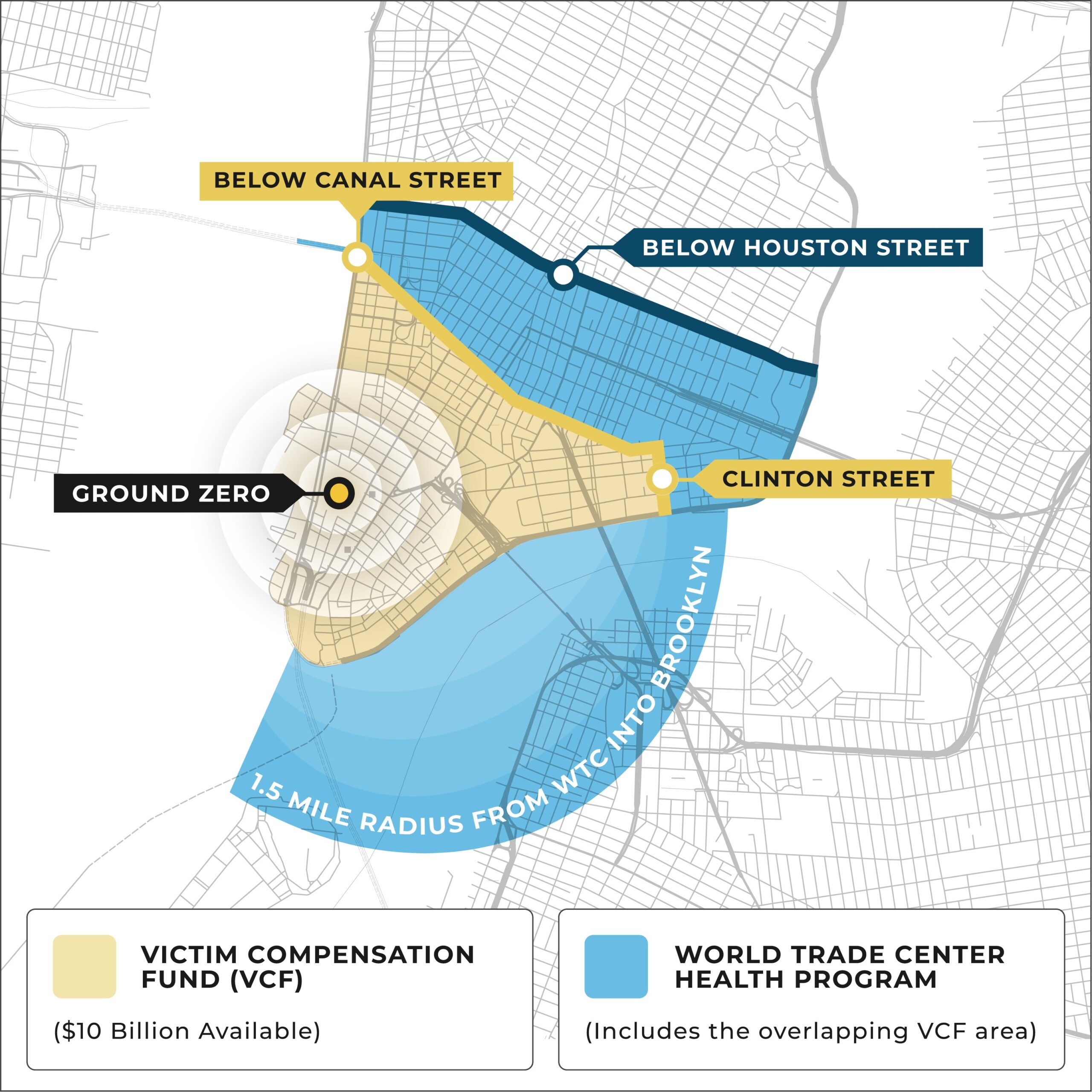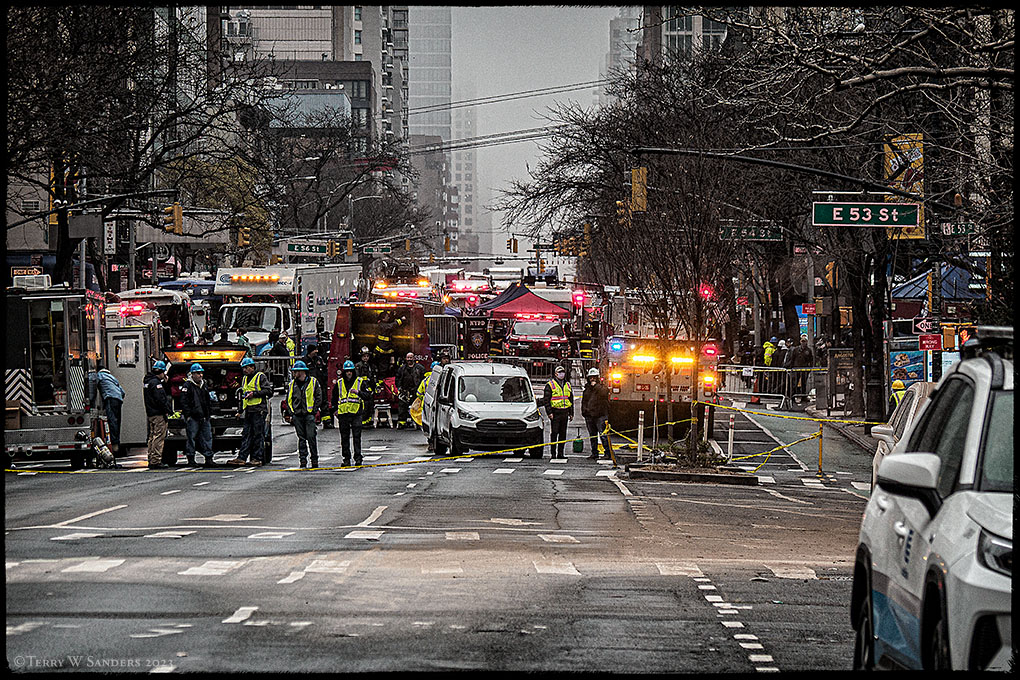New York City authorities took quick measures after a steam pipe leak between Second and Third avenues on Wednesday morning, asking residents of the area to stay inside and wear masks. A massive deployment of firefighters alarmed the locals but showed how seriously the threat of toxic, and specifically asbestos contamination, was taken. As of Thursday morning, apparently there are no signs of asbestos: but what if the leak had dispersed the dangerous substance in the air? We asked James Steiner, a Supervising Attorney for the Barasch & McGarry’s 9/11 Victim Compensation Fund (VCF) practice.
What do you think happened in Manhattan on December 27?
“First of all, preliminary tests show that there is no asbestos, but they are not final; also, I’m curious as to whether there will be independent testing. The second thing to know is how likely New Yorkers are to believe what they are told: there is a history of people being lied to, especially about the quality of the air.
I don’t want to be an alarmist, however, and at least it is clear from what happened yesterday that officials learned a lot from 9/11. Officials started evacuating residents and rerouting traffic to mitigate the number of people exposed: doing the right thing, prioritizing people’s health, which is what we like to see. Thus, the people who would be most likely to become ill are the responders themselves.
In the case of the 9/11 terror attacks, officials declared downtown Manhattan safe because the priority was not the safety of people – locals, but also students, teachers, office workers – it was getting Wall Street running again. So, people were told ‘come back to your homes, the area is safe’”.
How much asbestos is still in New York’s buildings?
“New York City is one of the oldest cities in the US and one of the first industrial areas. We are talking about foundations and infrastructures built so long ago, when we did not have the same tools and the same construction materials we use today – we have come a long way about non-contaminating materials, at least as far as we know. So, asbestos is fairly prevalent in the infrastructures. In the case of 9/11 the contamination came with the explosion and the pulverized buildings. In the case of a steam pipe leak, there might be a combination of heat and exposure pushing the pollutant up in the air with contact with the skin and also, when inhaled, internally where it does the most damage.”
Why is asbestos so dangerous?
“The two big factors to consider with asbestos are the duration and the intensity of the exposure. We know that exposure has been directly linked to a variety of terrible illnesses, the two most common – but by no means the only ones – being lung cancer and mesothelioma.”

What is the 9/11 Victim Compensation Fund?
“The claims we handle are not against anyone. The Fund is a federal fund set up as an alternative to litigation, because it would be very challenging and expensive for claimants to establish that they are ill because of the exposure and what their damages are. In recognition of these challenges, the government set up a fund where you can apply to establish that you were exposed to the chemicals in the air; there is also a separate program providing free healthcare and consultations.”
How many people were affected on 9/11?
“Estimates indicate that there were up to five hundred thousand people exposed to toxins. Residents, newborns, students, teachers, office workers in Lower Manhattan from 9/11 through 31 May 2022, that’s the eight-month period for compensation. What we have seen, working for so many years on this, is that there are so many people who do not realize, when they are diagnosed with cancer, that it may come from exposure. Symptoms can take twenty years to develop. Some people may not be living in Manhattan anymore, and when they are diagnosed, they may wonder, ‘why me’? They may think ‘I used to smoke’ or ‘maybe it depends on the sun’. The law however presumes that if there was sufficient exposure, that was the cause of your sickness.
My fear with the steam pipe rupture is exactly that twenty years from now someone might get sick, and they would not relate the illness to the exposure. I’ve seen the street covered in dust, which is exactly what happened with 9/11 where Lower Manhattan was covered in dust and ash. I have two young children and if I thought the area where I live could be contaminated with asbestos, I’d want to be absolutely sure before going back home.”
How much money did the Fund award until now?
“We are talking billions of dollars. The State recognized it had a responsibility because it told people that the area was safe, and it wasn’t. So, there was an obligation to help them back to health if possible.
Depending on the illness and its severity, compensation may go from thousands to millions with several components for damages, loss of benefits, loss of incomes. Also, families can make claims for someone who passed away. Also, the Act was amended and now the claim filing deadline has been pushed forward until October 1, 2090, in recognition of the possible outcomes of contamination.
But there is a huge disconnect between the number of people potentially touched, and those who were compensated. There are thousands of claimants still coming forward for compensation, and they are going to do so for the foreseeable future.
That’s why both lawyers and the Fund itself are prioritizing outreach. Information is essential, spreading the word and asking questions.”












